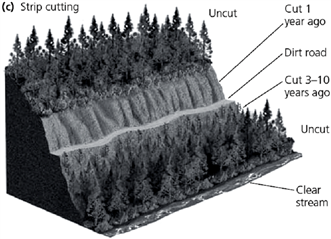What are the disadvantages of using biomass as a means to calculate primary productivity? What are some other means used to measure this productivity?
· Biomass, or mass of living tissue, present in an area is directly proportional to productivity. The problem with using this method in the ocean is that dense populations of autotrophs interfere with the amount of light penetration. The decrease in light penetration means autotrophs produce carbohydrates at a slower rate. This is no longer a direct proportion to productivity.
· In areas of small autotroph populations, there can be more light penetration. This would cause there to be a higher rate of primary productivity.
· Researchers have "tagged" carbon radioactively. Carbon-14 behaves in the same way Carbon-12 does during photosynthesis. This allows the researchers to measure productivity directly.
· Productivity can be measured by using light-dark bottle techniques. Two samples are collected, one is placed in each bottle. They are placed at a buoy. The light bottle receives sunlight while the opaque blocks the light. The difference in carbon uptake can then be calculated.
· Orbiting satellites are starting to be used in determining productivity. They can estimate the chlorophyll content of an area. This is directly related to photosynthesis.
You might also like to view...
Critical Thinking
What will be an ideal response?
Geographers are interested in how to divide and synthesize areas into meaningful spatial divisions called ____________________
Fill in the blank(s) with correct word
Which 2 layers of the atmosphere experience temperature inversion?
A. thermosphere and mesosphere B. stratosphere and mesosphere C. troposphere and stratosphere D. thermosphere and stratosphere
In the course of a single workday, a typical forecaster may examine and compare ____ individual weather maps
a. ?five b. ?seven c. ?ten d. ?dozens of e. ?thousands of